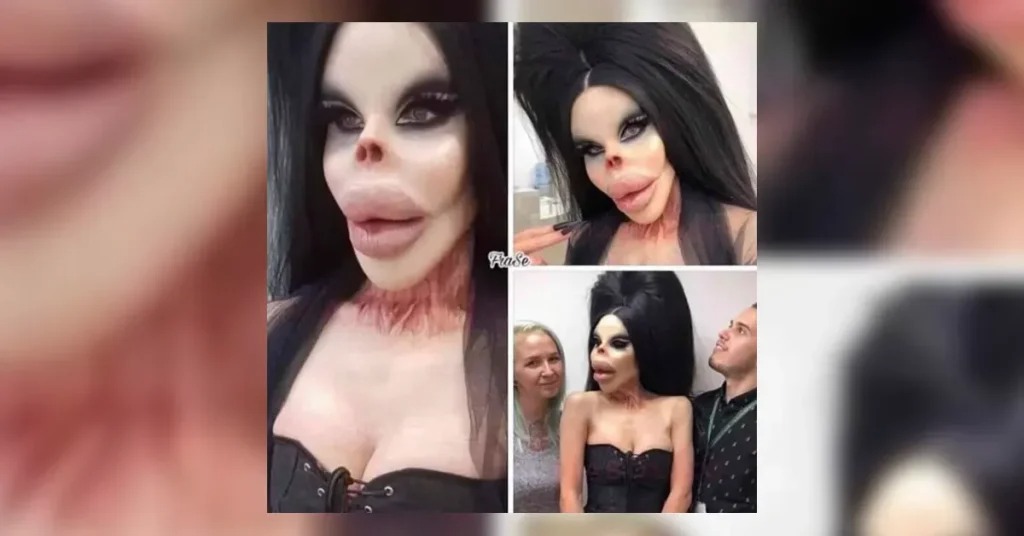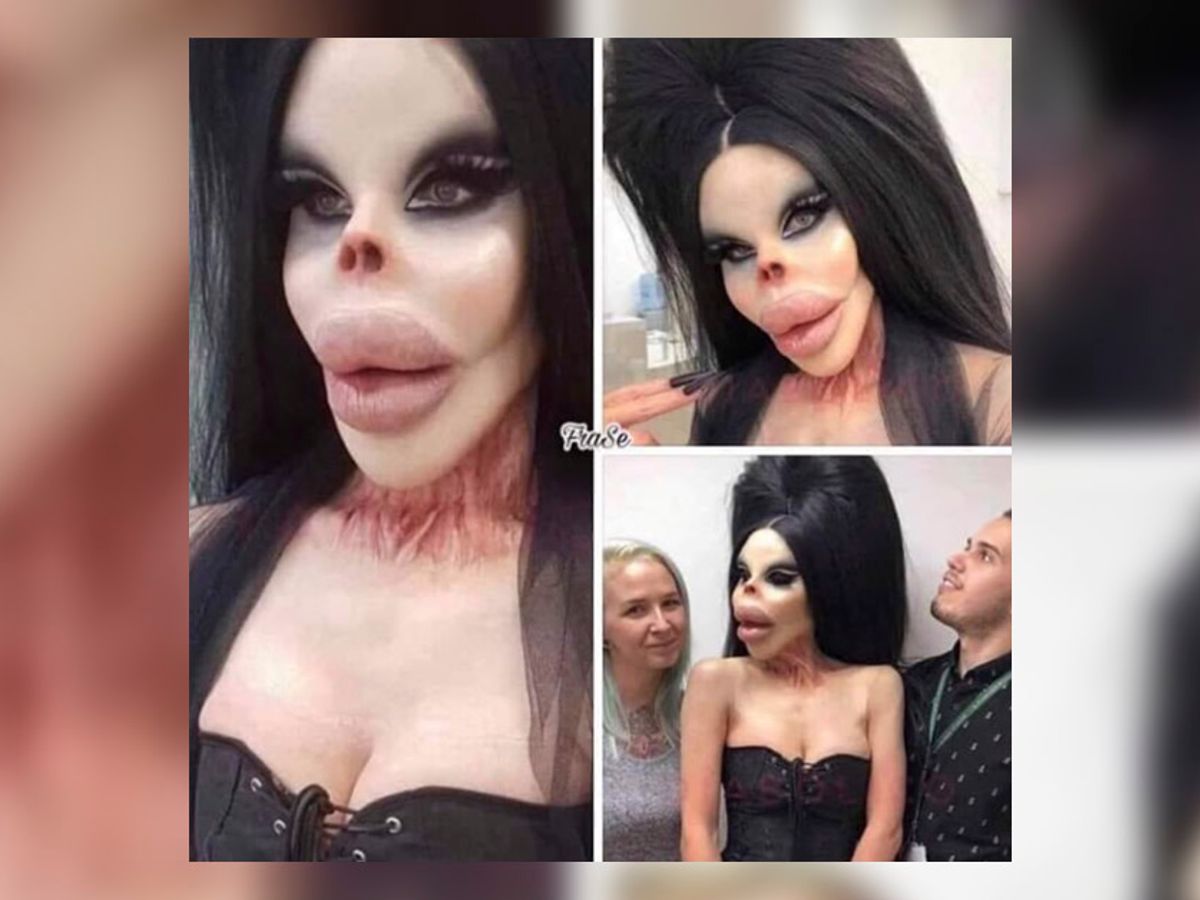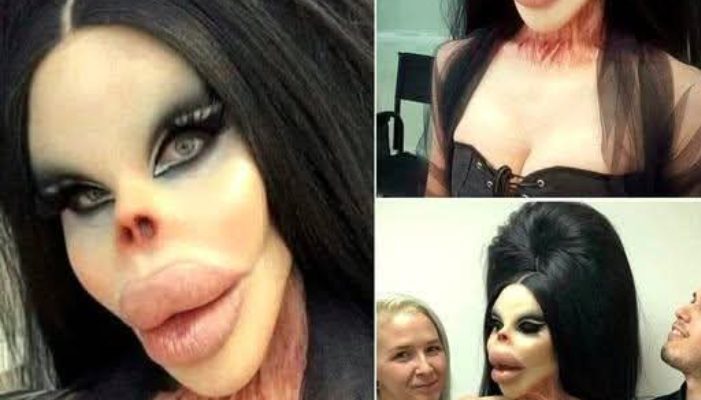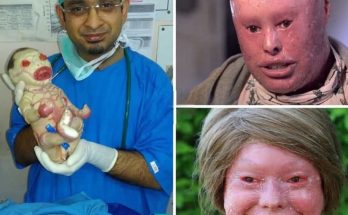KD13. Is This a 68-Year-Old Human ‘Barbie Doll’ After Botched Plastic Surgeries?

In recent years, a set of visually striking images has circulated across social media platforms and online forums, sparking widespread curiosity and concern.
The Artist Behind the Project
In this case, the intent was to highlight the psychological and cultural impacts of the beauty industry, especially the pressure many individuals feel to conform to ever-changing ideals of perfection.
The fictional character in the project was designed to appear as if she had undergone excessive cosmetic procedures.
However, her striking look was entirely constructed using makeup artistry, facial prosthetics, and detailed costuming, not surgery.
The illusion was made possible by a collaboration with makeup artist @suzanne_cliff and model @cassiedaisyrae, who helped bring the concept to life.

“This image is a work of visual art created using makeup and prosthetics—not a real person or surgical result.”
Not Surgery, But Special Effects: How the Illusion Was Created
The visual transformation was made possible using prosthetic applications, contouring, texture layering, and strategic lighting, all designed to create the appearance of stretched skin, altered facial structure, and dramatic makeup—elements that mimic the exaggerated results of cosmetic enhancements but were entirely fabricated for artistic effect.
To ensure transparency and dispel misinformation, Pinewood Studios released a behind-the-scenes video showing the full process of constructing the character. The footage documents the hours of preparation and application it took to create the final visual effect, clearly demonstrating that no real surgical alteration took place.
Instead, it served as an educational commentary on how societal pressures can drive people to pursue transformations that may be risky, costly, or emotionally harmful.
A Commentary on Beauty Standards and Identity
The character’s haunting and unnatural appearance was a deliberate choice—crafted to challenge perceptions and provoke introspection.
In creating such an exaggerated image, the project asked viewers to reconsider the cultural obsession with perfection, especially in a digital age dominated by filters, facial editing apps, and social media trends.
A particularly symbolic aspect of the design includes visible neck burns, which the artist explained as part of the character’s fictional backstory.
Rather than being purely visual, these features serve as a metaphor for past trauma and the impact of childhood experiences on self-image.
The underlying message encourages viewers to value their personal histories, including physical and emotional scars, rather than erase them in pursuit of unattainable ideals.

Promoting Awareness, Not Shame
The goal of the project, according to the artist, was never to shame or criticize individuals who opt for plastic surgery or other cosmetic procedures.
Instead, it was to raise awareness about the psychological impact of relentless beauty standards, particularly those promoted through mass media and online platforms.
Research from the American Psychological Association (APA) and Harvard Health Publishing has shown that body image dissatisfaction can lead to mental health challenges, including anxiety, depression, and low self-esteem.
The increased accessibility of cosmetic procedures has led to rising interest among younger audiences, often influenced by the “flawless” images they see online.
(Sources: APA, Harvard Health Publishing)
Social Media’s Role in Shaping Beauty Ideals
Social platforms such as Instagram, TikTok, and Snapchat have revolutionized how beauty is perceived and portrayed.
With face-smoothing filters and body-altering apps now available to millions, the line between real and enhanced appearance continues to blur.
These technologies contribute to distorted self-perception, particularly among younger demographic
Visual art projects like this one serve an important purpose by offering critical counter-narratives—encouraging people to question what they see online and reflect on how those images influence their behavior, self-worth, and expectations of others.

Art as a Tool for Social Reflection
Throughout history, artists have used their platforms to address complex societal issues, including identity, gender, body politics, and media influence.
The “human Barbie doll” character fits within this tradition, offering a vivid and unsettling reminder of what can happen when external ideals are prioritized over individual authenticity.
By creating a fictional persona that appears real, the project blurs boundaries between art and commentary, forcing viewers to engage with uncomfortable truths. The realism of the images makes the message more powerful—and, importantly, invites dialogue rather than judgment.

Final Thoughts: A Powerful Message About Self-Acceptance
The viral images that many believed to depict an elderly woman altered by plastic surgery are, in fact, a masterfully executed art installation.
With the combined expertise of visual
artists, makeup specialists, and storytellers, the project uses illusion to challenge real-world beauty pressures.
Rather than promoting fear or shame, the project encourages viewers to embrace their natural appearance, reflect on societal expectations, and value the diversity of human expression.



